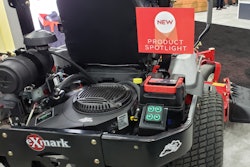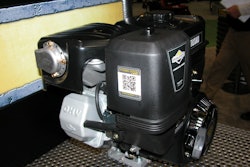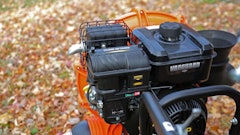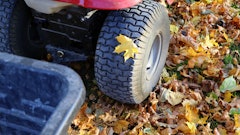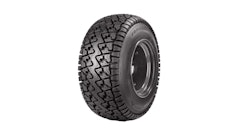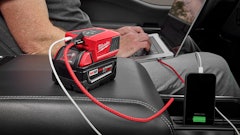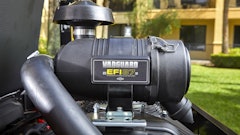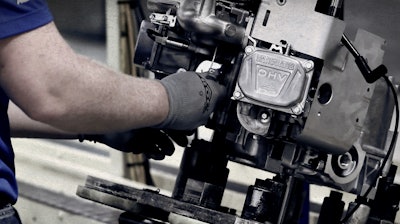
Maintenance. It’s an unavoidable part of the job, necessary to keep things moving, mitigate equipment failure and limit downtime. Maintenance can also be a hassle—not unlike any routine task—but, thanks to recent advancements in engines and engine design, it doesn’t have to be.
Fortunately for the industry, manufacturers are developing features that reduce maintenance and its associated downtime. Unfortunately for contractors, nobody has yet discovered how to eliminate maintenance needs entirely.
When it comes to maintenance, regular and preventive measures are essential. Here are the top seven maintenance tips and tricks to keep your engine in premium condition to improve productivity on the jobsite.
1. Fuel for Productivity
An engine is only as good as the fuel you put in the tank. For years, fuel choices were limited to regular, unleaded and diesel. Nowadays, you can add ethanol fuel blends to that list.
Lower-level ethanol, typically 10 percent or less, is safe to use in most engines. Ethanol-free gasoline with an octane rating of 87 or higher is generally a good fuel choice. Choosing a fuel that is optimized for your engine is key to ensuring performance and avoiding engine issues, such as misfires, and long-term damage.
2. Consider Propane
While gas is the familiar industry fuel, in some instances, fueling with propane can offer benefits and advantages for your operation.
Propane eliminates some elements of operator error in environments where that can be a significant problem. For example, if you’re working on a golf course, gas spillage can cause dead or brown spots. With propane, spillage is never an issue. Using propane can also help avoid fuel storage issues, as equipment can be stored for long periods of time since propane isn’t susceptible to going stale.
Using propane can impact your maintenance schedule by reducing the amount of time a crew spends refueling. If your crew of four stops at a gas station for 15 minutes, that’s a combined hour of lost productivity. With propane, you can easily refuel on the job.
3. Store Smart
Storing your equipment is unavoidable at times, but doing so can quickly lead to stale-fuel issues. Once fuel is added to an engine tank, it starts to lose volatility. To mitigate issues associated with stale fuel, such as diminished performance and vapor lock, fill your tank with fresh gasoline after removing equipment from storage.
If you know equipment is going to be stored for significant periods, use a fuel stabilizer to combat stale fuel. Often, fuel stabilizers help prevent gum and varnish buildup, and can combat the corrosion associated with ethanol fuels and chemical breakdowns.
4. Swap out Spark Plugs
With time, spark plugs can be susceptible to carbon deposits and other types of performance-inhibiting damage. Worn spark plugs can lead to engine misfires, stalling and difficulty starting. Regularly removing and inspecting your engine’s spark plugs, and replacing them when necessary, can help you avoid these issues.
5. Opt for Oil Changes
Skipping oil changes opens the door for significant engine damage. Relying on oil past its service life means relying on oil with decreased viscosity, and a diminished ability to correctly clean, cool and lubricate your engine—all of which may lead to lower engine performance capabilities and lasting damage.
While the industry is starting to see advanced oil management systems and improved oils that extend oil change intervals, it’s still important to know and understand the guidelines for your fleet’s engines. Changing oil too often can waste resources, while waiting too long can lead to engine damage. Knowing your engine’s oil-change intervals and adhering to them ensures your fleet can run like a well-oiled machine.
6. Give Your Engine Fresh Air
Fresh air is one of the key performance components in small air-cooled engines, which means regularly changing the air filter is critical. Generally, air filters should be changed every 100 to 250 hours, depending on the application and filter type.
With advancing technologies, such as cyclonic air filtration, it’s important to choose original equipment manufacturer (OEM) filters designed specifically for your engine to guarantee fit and performance. Often, these filters have a longer lifespan and ensure better engine productivity.
7. Assess Your Fleet
At the beginning and end of each season, take stock of your equipment fleet and the engines you rely on to keep it running. Are the engines older, no longer performing efficiently or experiencing frequent issues? Can these performance issues be improved with proper maintenance practices or are they simply related to old age? If so, it may be time to repower.
Engine maintenance needs are being reduced and simplified as advanced technology continues to improve in the industry. However, performing proper maintenance is always going to be an integral component of ensuring your fleet is primed for productivity.
Until self-maintaining engines are developed (a person can dream!), understanding your engine’s maintenance needs and sticking to a schedule is key to keeping your fleet up and running.



